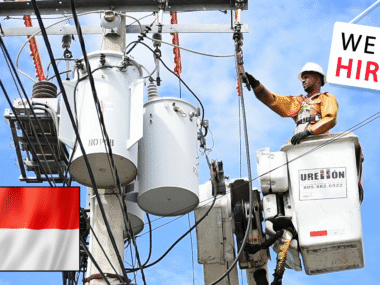An Introduction to Understanding Employee Engagement
Employee motivation and job satisfaction have long been important topics for businesses hoping to maintain a productive and happy workforce. As we head into 2024 and beyond, these issues will remain highly relevant, especially considering the ongoing impacts of the COVID-19 pandemic on work culture and priorities.
Motivation and satisfaction are complex subjects influenced by many interrelated aspects of one’s work and personal life. There is no single solution, but with open communication and a commitment to continuous learning, companies, and employees can work together to create a sustainable environment where people feel valued in their roles. The following sections will explore this topic from multiple angles to help readers gain a comprehensive understanding of both challenges and opportunities.
Defining Key Terms
Before diving into the main discussion, it is helpful to define a few technical concepts:
Employee motivation refers to the internal and external factors that stimulate desire and energy in people to be continually interested and committed to their work and to exert effort towards organizational goals. Common factors influencing motivation include compensation, relationships with colleagues and managers, workplace culture, opportunities for growth, and the work itself.
Job satisfaction describes the level of contentment a person feels regarding their job or career as a whole. It is affected by how much they enjoy or dislike their work responsibilities, how respected and supported they feel by their employer, their perception of fairness and opportunities, and whether their job allows them to fulfill important personal values.
Employee engagement is a broader term that captures both motivation and satisfaction. Highly engaged employees are both motivated to contribute value and feel deeply connected to their organization’s mission and success. They work with passion, put discretionary effort beyond their core duties, and aim to stay with an employer long-term. Engagement has been consistently linked to higher productivity, retention, customer satisfaction, and overall performance.
With shared terminology established, the post can now examine trends anticipated to shape workplace dynamics in 2024 and beyond. Upcoming sections will analyze key organizational, industrial, cultural, and lifestyle influences that both challenge and empower employers seeking to optimize employee motivation and satisfaction.
Emerging Workplace Trends Impacting Satisfaction
The Lasting Effects of the Pandemic
The COVID-19 pandemic has indelibly altered societal and economic paradigms around the world. For the workplace, some of its effects on employee priorities, preferences, and well-being will persist in the long term. Two major trends that emerged during the pandemic and will continue to shape engagement in 2024 are:
Increased Emphasis on Flexibility: Widespread remote work normalized the concept of location-independent and flexible scheduling arrangements for many jobs. While not always feasible in roles requiring on-site operations, employees have grown accustomed to flexibility and balancing professional demands with personal responsibilities. Research shows younger generations, especially now, value flexibility highly when considering employers. This flexibility facilitates work-life integration that benefits mental wellness.
Renewed Focus on Health & Well-Being: Prolonged stress, illness threat, and social isolation during lockdowns highlighted the importance of holistic wellness for individuals, families, and communities. Employees now increasingly expect employers to demonstrate care for mental, physical, and financial wellness through resources like counseling, parental leave, sick days, and health benefits. Investing in these areas has been shown to lower costs from absenteeism while boosting retention and productivity.
The pandemic demonstrated that flexibility and well-being need not undermine business operations when managed smartly. Organizations making these priorities long will retain an edge in recruiting and retaining talent as we adjust to life after COVID-19.
Macroeconomic Shifts and Inflation
Persistent high inflation disproportionately impacts segments of the workforce on fixed incomes. As the cost of living rises into 2024, employee financial stress may intensify unless wages appropriately increase. Money worries are a leading cause of reduced motivation, job changes, and calls from unions and activists for living wages that properly compensate for effort. Staying competitive on compensation and assisting staff facing hardships can strengthen engagement during inflationary periods.
Simultaneously, ongoing economic shifts like automation continue pushing structural changes across many industries. While some jobs are lost to technology, new roles are simultaneously created requiring higher-level skills. This reinforces the need for employers to routinely assess position needs, support internal mobility, and offer training/reskilling to nurture talent across career lifecycles. Failing to do so risks becoming obsolete in evolving markets and losing top contributors seeking growth.
Societal Changes Driving New Expectations
Looking even further ahead, forward-looking organizations are starting to consider additional societal changes that may significantly impact work culture norms by 2024. Two examples with relevance to motivation include:
Generational Shifts: Younger generations entering the workforce, like Gen Z, have grown up with exposure to diverse values and lifestyles. They increasingly prioritize social impact, purpose-driven work, environmental sustainability, and flexibility over traditional markers of success. Adapting company missions and communications to resonate with evolving demographics will strengthen engagement.
Racial Equity Focus: Ongoing pushes for racial justice and inclusion have prompted employees across profiles to carefully consider corporate actions on diversity, equity, and belonging. Demonstrating real commitment to these issues through policies, leadership, and community partnership can boost satisfaction among minority groups. However, failing to respect growing emphasis or address systemic disadvantages risks alienating talent and eroding trust over time.
Navigating societal changes requires firms to thoughtfully adapt culture while also ensuring varying stakeholder needs are respected. Leadership’s willingness to listen and adapt positions companies well for continued success amid disruption.
Trends in Workplace Support Structures
In response to the evolving needs and expectations outlined above, leading organizations are exploring new support structures to enhance employee experiences in meaningful ways. Some anticipated 2024 trends include:
Increased Investment in Healthcare & Wellness
Building on lessons from the pandemic, many employers will bolster various health measures:
- Expanded healthcare benefits addressing physical, emotional, and financial dimensions of well-being.
- On-site or subsidized services like gyms, nutrition classes, and mental health counseling.
- Paid family or caregiver leave beyond legal minimums to accommodate workers’ lives.
- Ergonomic assessments and adjustments to promote occupational safety.
These proactive investments help retain talent through life challenges while reducing absenteeism and increasing productivity. Teams genuinely caring for one another thrive.
Career Development as a Core Benefit
In changing economic landscapes, internal mobility and constant learning become essential for resilience. Leading companies operationalize these philosophies by:
- Formally assessing skill gaps and interests to design custom development roadmaps.
- Budgeting for continuing education, certifications, and skill-building opportunities.
- Structured mentoring and coaching programs pairing talents for mutual growth.
- Internal job posting systems are alerting all to new openings to spark motivation.
When development is championed rather than an afterthought, employees remain engaged through challenges while businesses strengthen required capabilities.
Embracing Hybrid and Remote Work
Thanks to technology advancements, many roles can effectively function without fixed offices. Top companies allowing flexible arrangements report benefits including:
- Access to wider talent pools is no longer constrained by geography.
- Happier, less stressed employees balance responsibilities efficiently.
- Reduced real estate costs and environmental impact from commuting.
- Heightened focus on results over time spent appearing busy or in meetings.
By thoughtfully crafting hybrid policies balancing individual preferences with team/customer needs, the future of work becomes brighter for all involved.
Actions for Leaders to Boost Engagement
Beyond structures, leadership qualities strongly influence whether employees feel valued, motivated, and aligned with organizational missions over the long run. Especially in times of ambiguity, clear guidance and mutual care-giving foster resilience:
Model Diversity, Equity & Inclusion
Authentic diversity championing at executive levels sends powerful signals that all people matter. Continually assessing bias in policies, promotions, and opportunities to address any unfairness also builds trust, which engagement depends on.
Communicate Vision & Strategy with Empathy
Sharing full context for decision-making wins understanding for tough calls. Focusing transparently on stakeholders’ core interests through challenges keeps everyone feeling their efforts make a difference.
Solicit Continuous Feedback in Multiple Formats
Traditional annual surveys miss nuances better captured through ongoing dialogues. Roundtables and skip-level meetings in safe spaces empower the sharing of new perspectives to strengthen strategy based on realities, not assumptions.
Recognize Individual & Team Wins Visibly
While compensation fulfills basic needs, meaningful rewards reinforce positivity, collaboration, and risk-taking. Public displays of appreciation for diverse achievements keep passion and purpose energized.
Lead with Vulnerability and compassion
Exemplifying humility and admitting limitations as humans, not infallible executives, fosters mutual care and accountability vital for well-being. Flexibility to family needs signals respect for whole lives, not mere productivity.
Organizations fortunate to have such leaders keeping their humanity and evolving with empathy will see inspiration and performance thrive in tandem as the future unavoidably continues changing our work worlds. Overall efforts must center on engaging all minds to overcome new challenges together.
Frequently Asked Questions
1. What are some of the biggest challenges to motivation and satisfaction in 2024?
Some of the biggest challenges include high inflation reducing purchasing power, burnout from ongoing workload pressures, lack of flexibility and work-life balance, inadequate or unequal opportunities for career growth, and unaddressed issues around diversity, equity, and inclusion.
2. How can companies evaluate employee engagement levels?
Companies can evaluate engagement through periodic surveys, focus groups, exit interviews, and tracking metrics like absenteeism and turnover. 360-degree feedback and skip-level meetings also provide valuable insights. It’s important to solicit input anonymously to get honest perspectives.
3. What role does compensation play in motivation?
While compensation alone does not guarantee motivation, adequate and competitive pay that increases aligned with the cost of living and individual contributions over time is table stakes. Compensation works best as one piece of an overall rewards package that also includes career growth, flexibility, meaningful work, and appreciation.
4. How do I start a conversation about engagement with my team?
Leaders can start by acknowledging change fatigue, expressing care for people’s whole well-being, and inviting open sharing of challenges and ideas without defensiveness. Asking thought-provoking but not leading questions, actively listening, and openly committing to certain actions build trust for productive discussions.
5. What’s one action I can take immediately to boost engagement?
One high-impact action is sending handwritten cards to employees randomly throughout the year, recognizing accomplishments, thanking people for their efforts, and expressing appreciation for unique contributions. Personalized, unexpected, and public recognition strengthens motivation and satisfaction.






